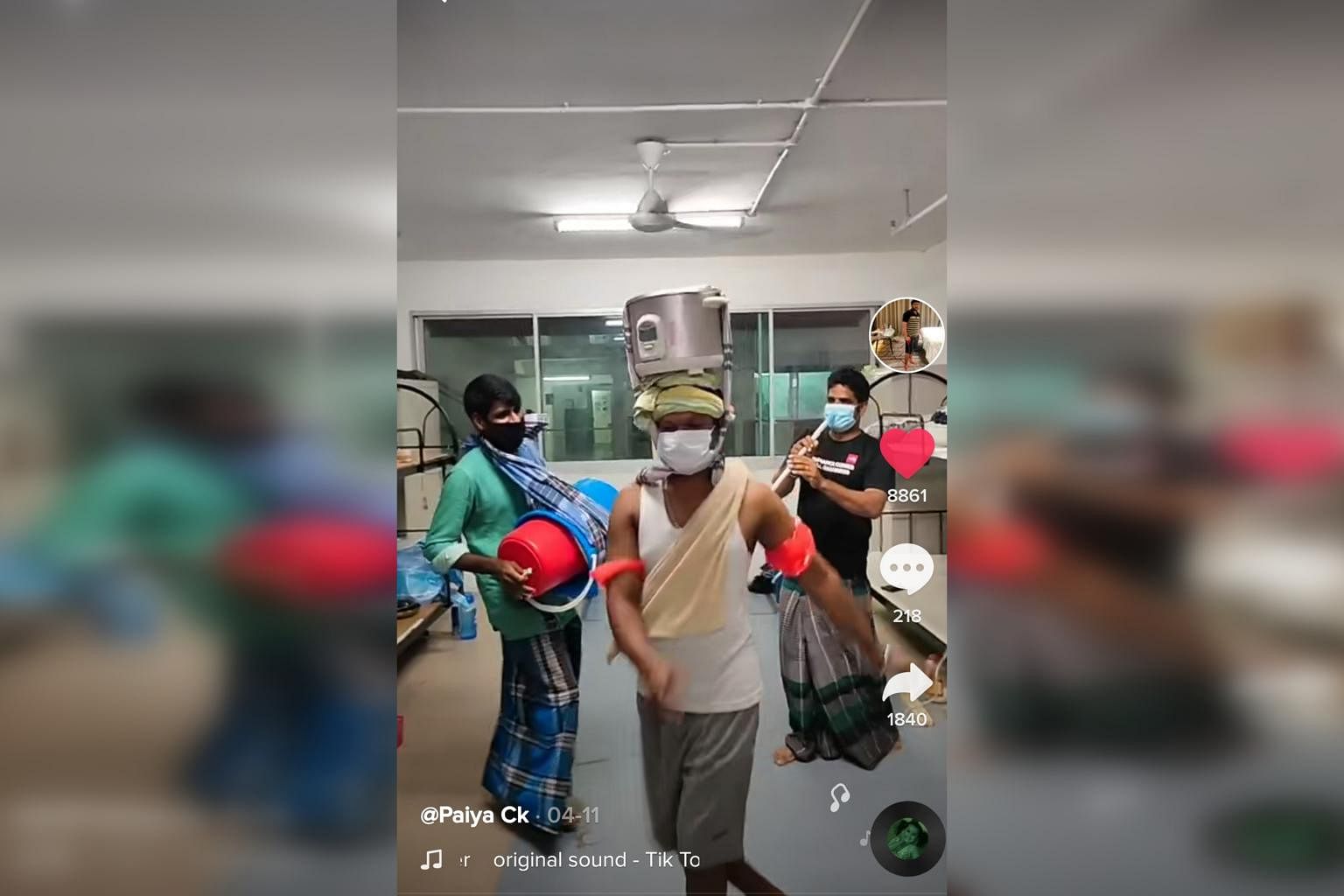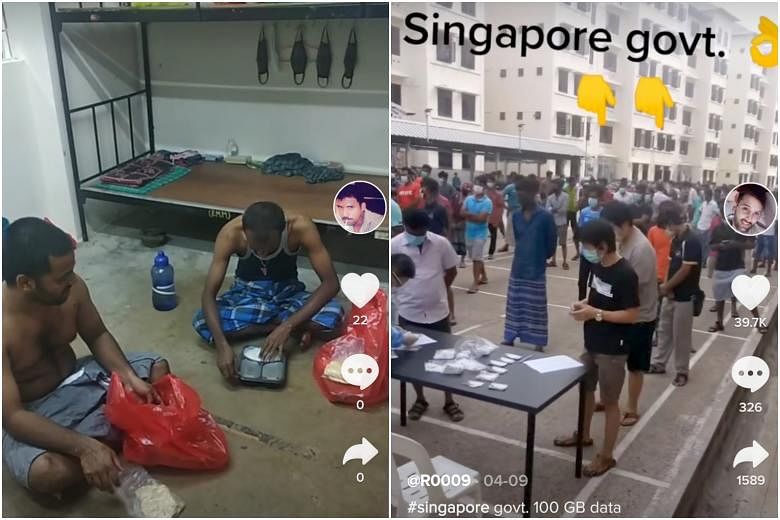SINGAPORE - For 10 seconds, a phone camera shakily pans across a scene of snaking queues of mask-clad workers waiting to collect free mobile phone top-up cards at the Woodlands Dormitory carpark.
In the background, a man's voice can be heard saying in Hindi: "Look here at the Singapore government. Because the workers are sitting unoccupied due to the lockdown, (it) has provided them with free data SIM cards."
The video by North Indian safety technician Kumar Ravi, 30, has racked up over a million views on video-sharing platform TikTok since it was posted in early April, when dormitory lockdowns led to migrant workers being quarantined in their room for months.
Viewership has spiked for short videos posted by migrant workers here, who were suddenly showered with attention when they gave the world a glimpse of their lives in lockdown. They also used social media to encourage one another and forge friendships while confined to dorms.
But some researchers and NGOs say these platforms have greater potential to connect migrant workers and locals.
"In the early days of the outbreak, TikTok was one of the avenues for Singaporeans to peek into the lives of our migrant friends," said Ms Nicolette Tan, head of public relations at the Covid-19 Migrant Support Coalition (CMSC), a collaboration of ground-up initiatives.
There was also two-way interaction, with one-on-one befriender initiatives and some in small groups of workers and Singaporeans.
"Social media definitely provides a voice for our migrant friends to share their lived experiences during this time and an outlet to record how they are experiencing Covid."
Many migrant workers use TikTok just to share excerpts of their daily life. During the lockdown, Bangladeshi landscaper Howlader Shajada, 35, began making his short videos.

He did not expect his video of dorm residents showing their moves in a mass dance exercise at Sungei Tengah Lodge to hit more than 170,000 views over a few weeks.
Mr Shajada was also unprepared for the flood of good wishes from fellow workers, male and female, from countries including South India, the Philippines and Myanmar, saying: "Stay safe, brother".
"Using TikTok made me feel less lonely, especially during the month when I stayed alone in a hotel," he said in Bengali.
Another Bangladeshi worker, Mr Samirul Islam, 28, made almost 80 videos during the lockdown.
These included clips of his roommates exercising in their room and videos of him singing along to popular Bengali songs. Mr Samirul said the bulk of his followers are other workers in Singapore, both men and women. He has accumulated nearly 3,000 followers since June.
Migrant workers' social media posts, however, connect mainly with other workers, not Singaporeans.
"While there is some level of discussion about the plight of these workers, there is no mass awareness of their situation among Singaporeans yet," said Associate Professor Arul Chib, who teaches mobile communication at Nanyang Technological University.
Singaporeans who reached out to migrant workers said it was a challenge finding the workers' social media profiles.
Sometimes, workers misspell popular hashtags such as "#singapore". Even for those who spell it correctly, the vast number of posts under these hashtags causes workers' posts to be buried.
For example, coalition volunteer Stella Tan, 19, was assigned to reach out to workers and identify those who needed necessities, such as snacks and cleaning supplies, delivered to them.
"It takes extra steps to find workers on TikTok, so the average Singaporean won't be exposed to these accounts," said the freshman at Yale-NUS. She found the workers through the coalition's founder Cai Yinzhou, who featured them on his Instagram page.
"Migrant workers' posts are really a window into their lives. A lot of them express sadness and loneliness being here, and it was a lot for me to process," said Ms Tan. She used this experience to raise awareness about workers among her friends.

